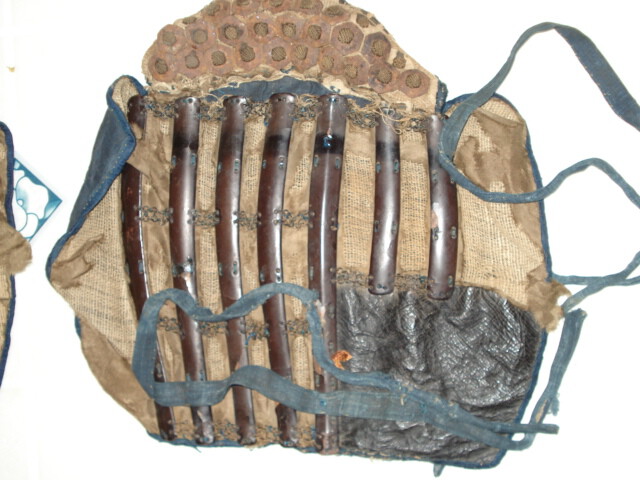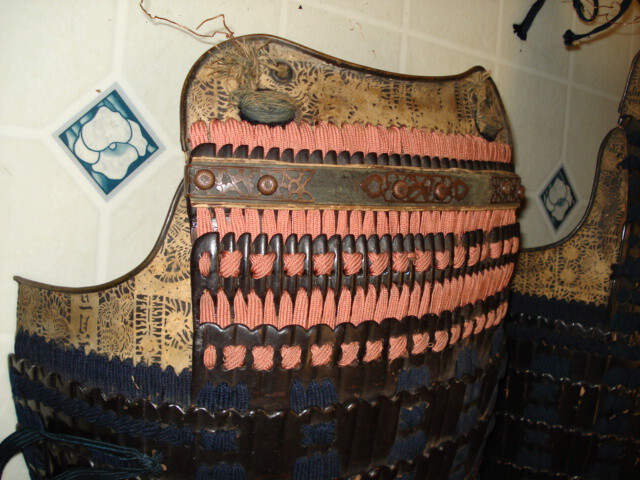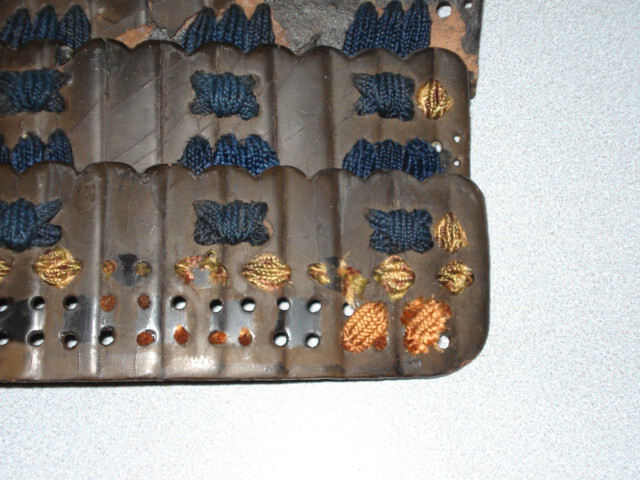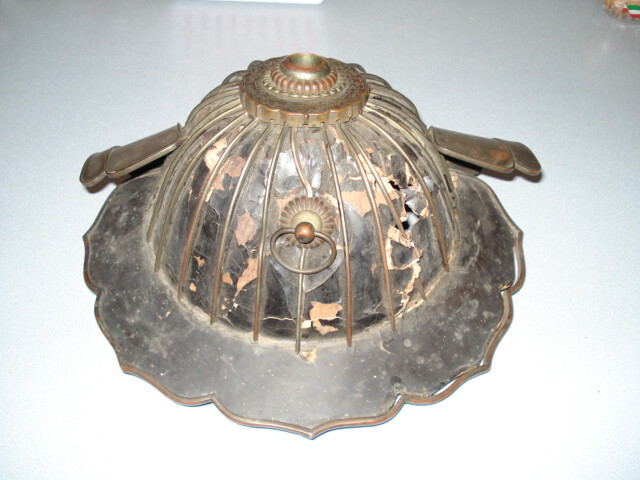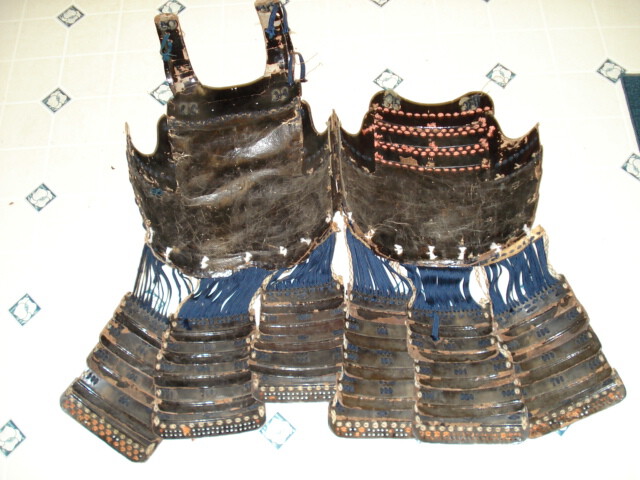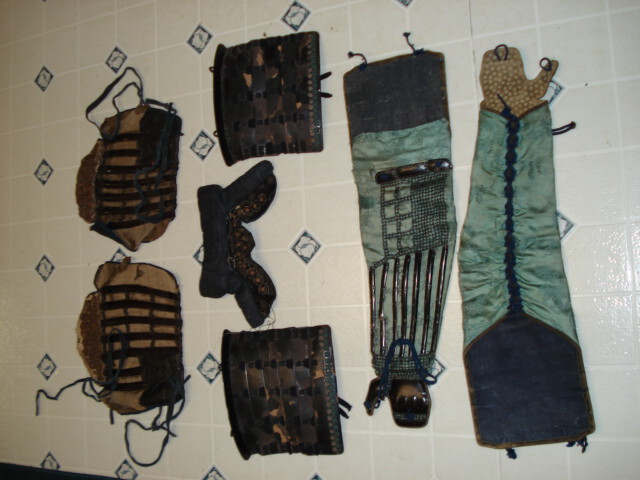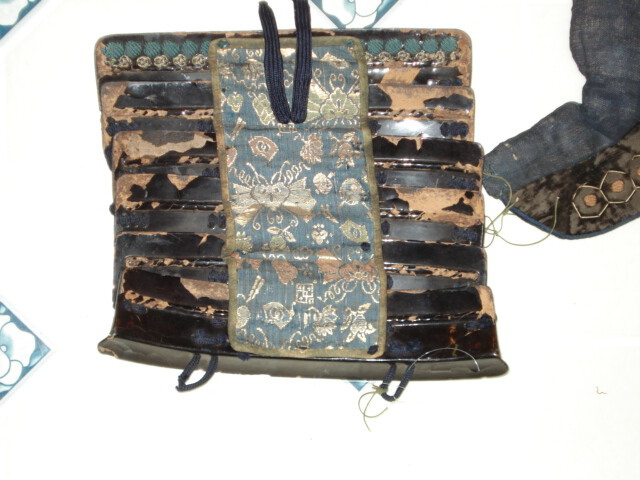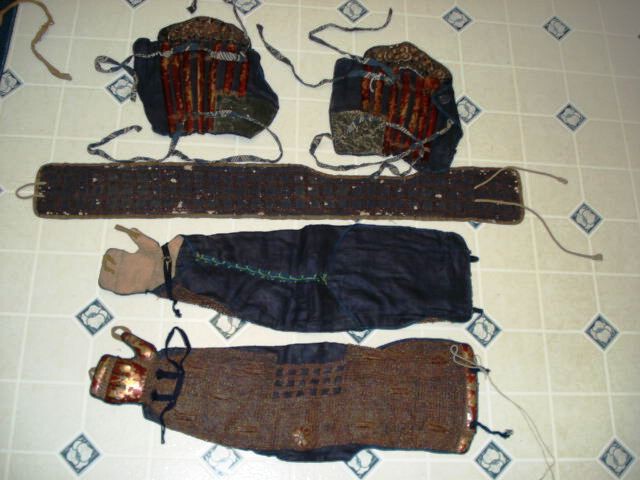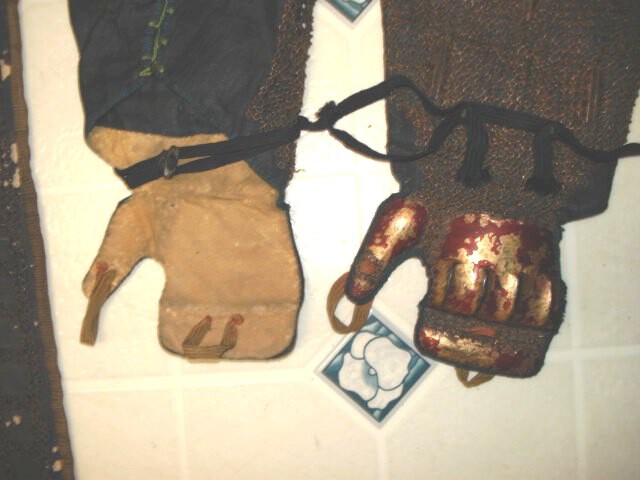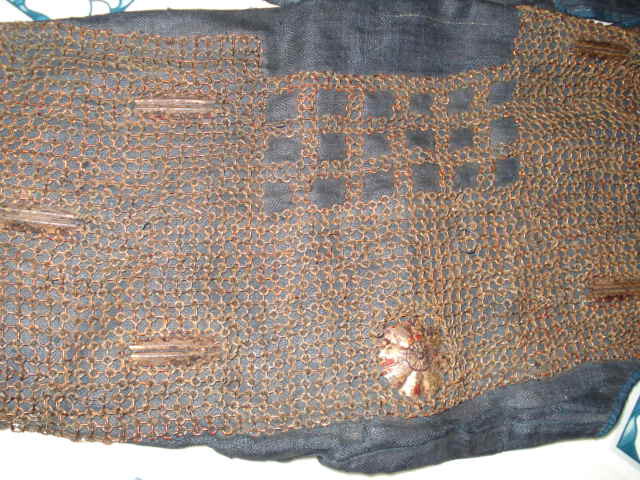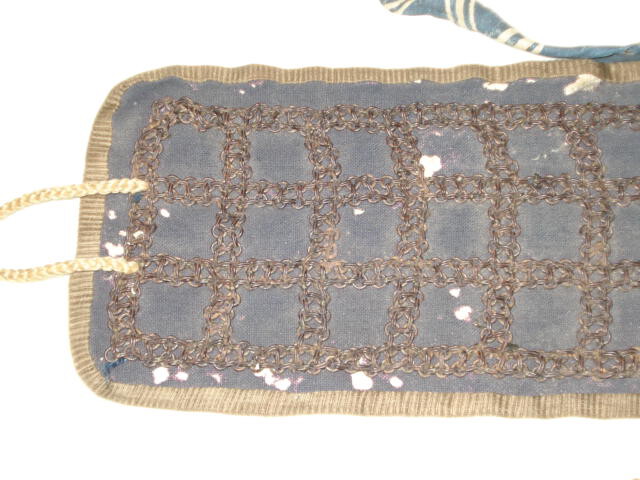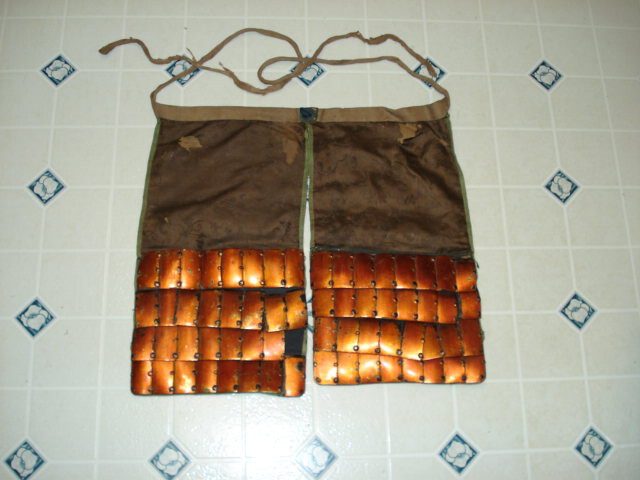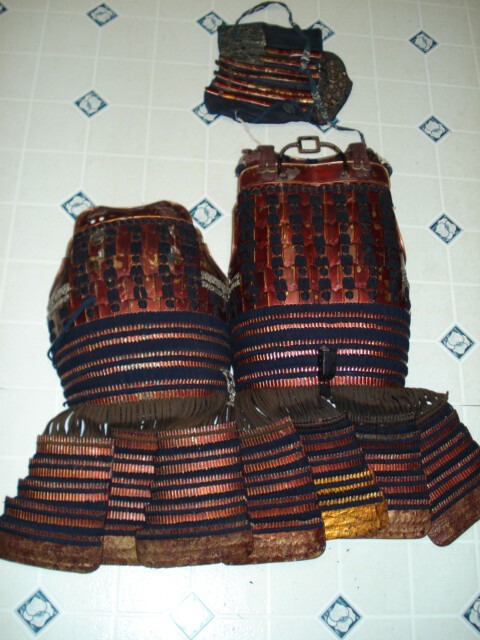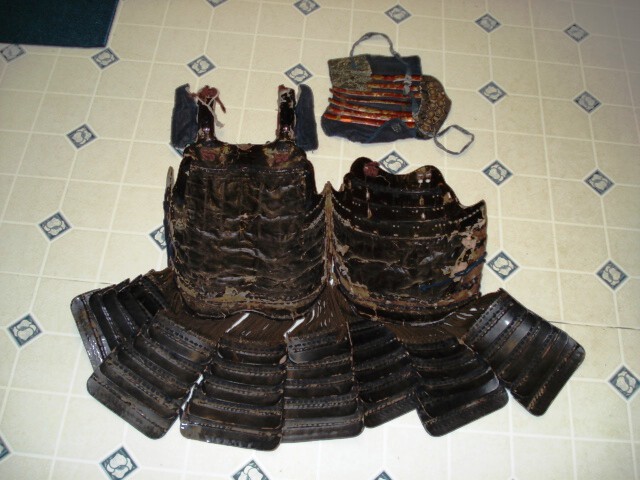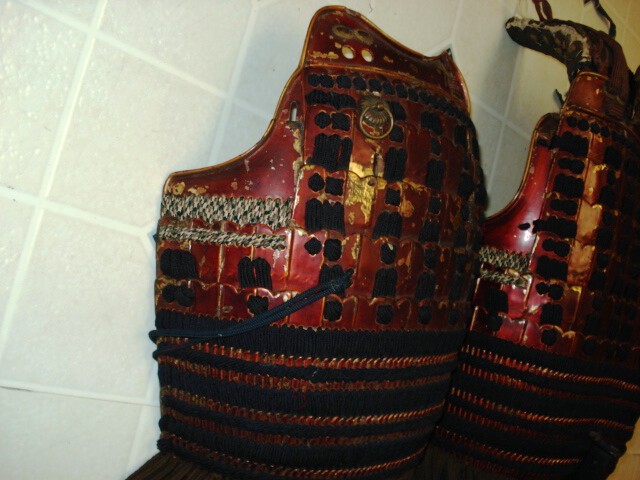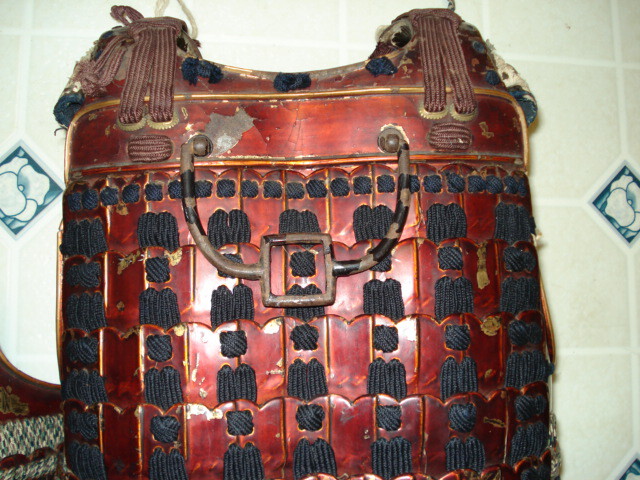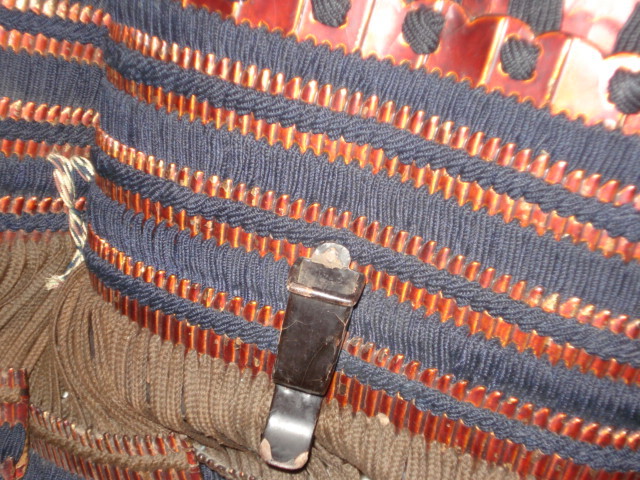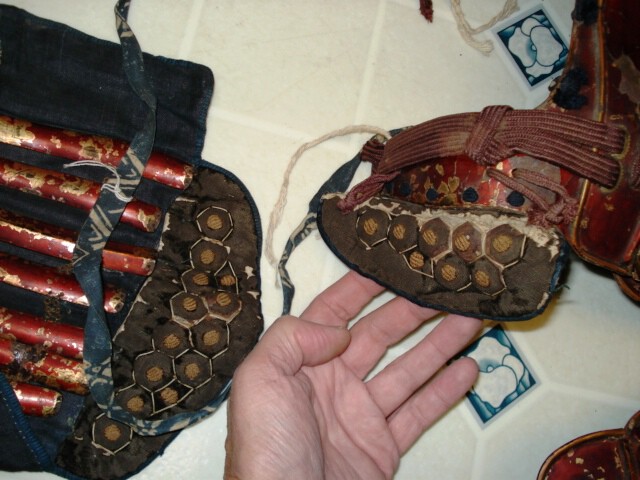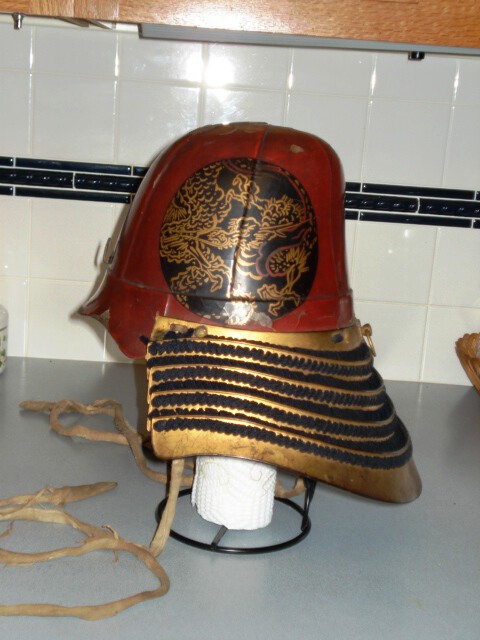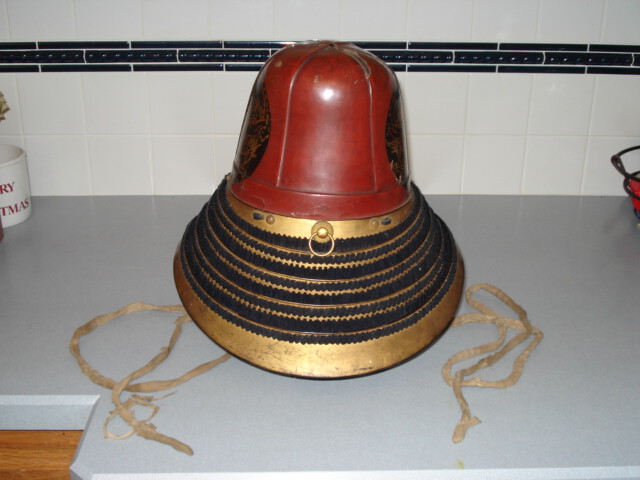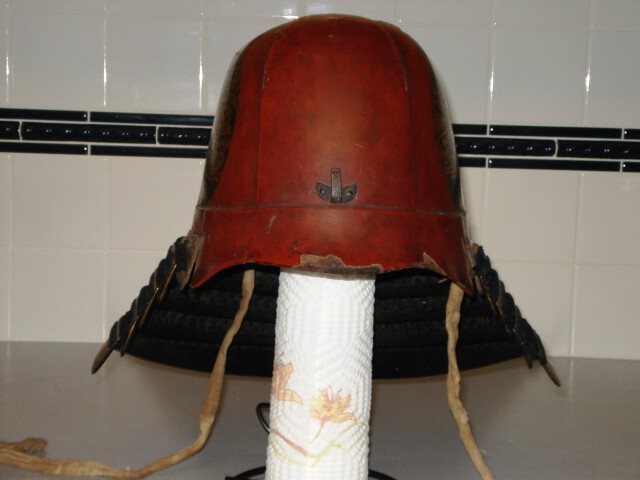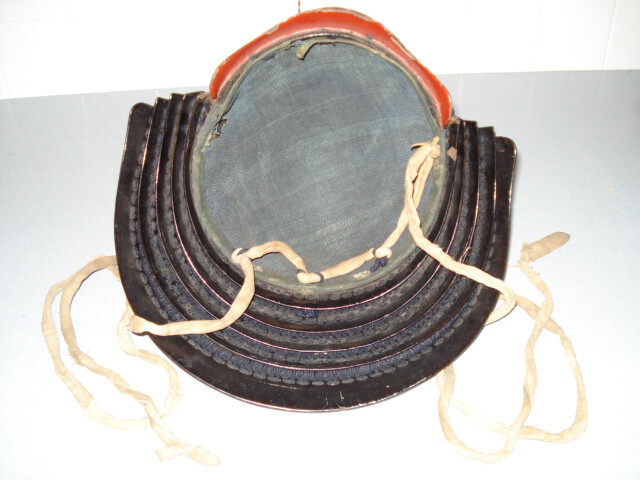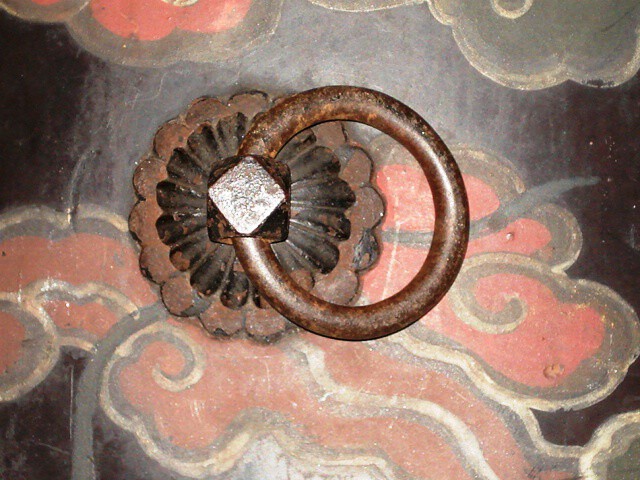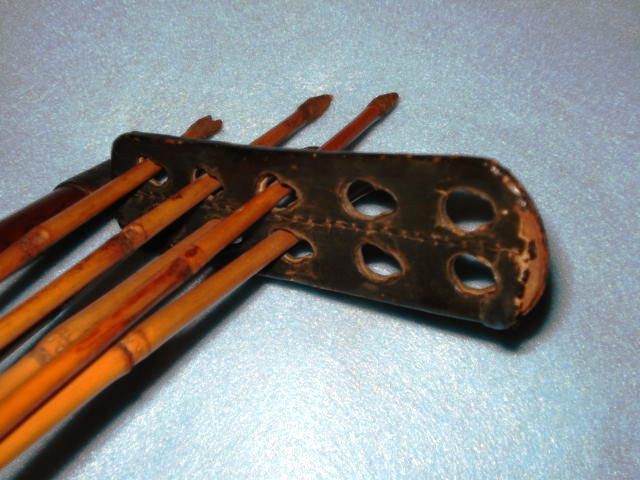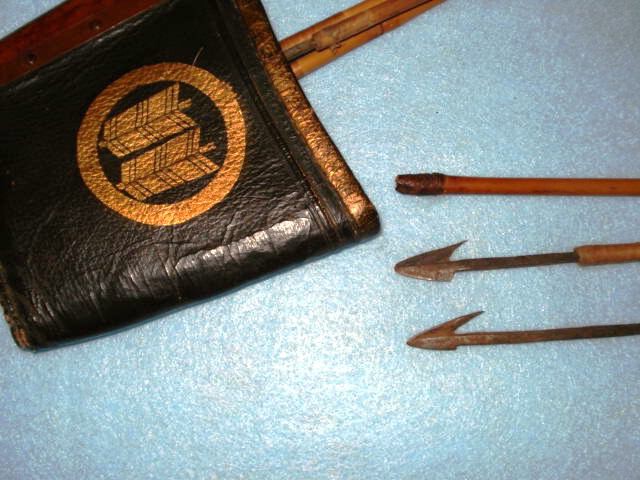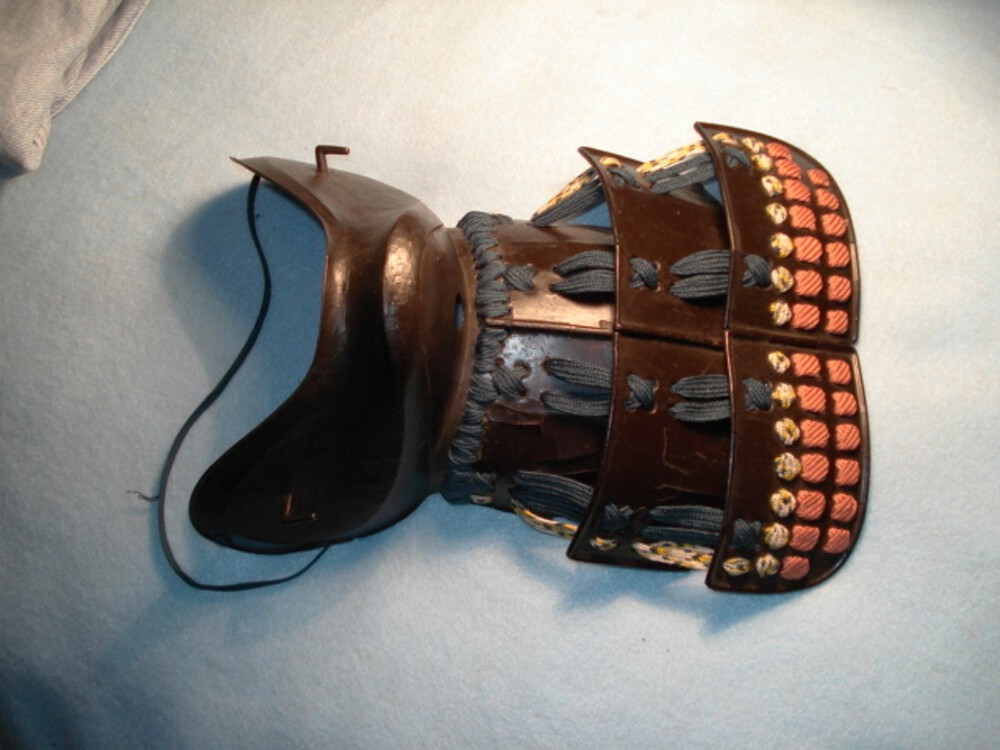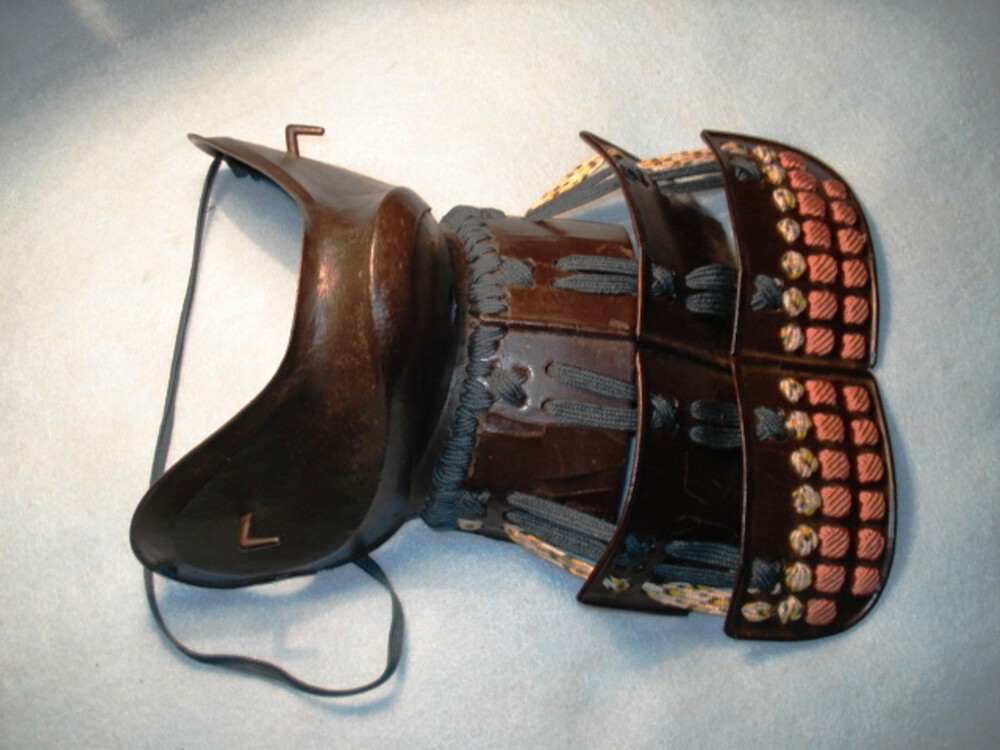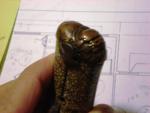-
Posts
334 -
Joined
-
Last visited
Content Type
Profiles
Forums
Events
Store
Downloads
Gallery
Everything posted by edzo
-
Dear Eric T., I have attached the photos i promised. I noticed that the kusari is quite different and more beefy than the sleves. I may consider selling the piece seperately primarily because i think it was an option when ordering armor, and the slightly different construction. Let me know if the photos were OK. ed f img189.pdf
-
Dear David, I did not understand either given the banner i posted below made me curious as well. I originally thought it might help localizing and dating the tsuba as well. Maybe i'm just showing my ignorance, just trying to make a contribution as the site has been so helpful to me. Ed Banners.pdf
-
Hi Eris check this out. ed Edited added attachment Donning Japanese Armour.pdf Many types of kusari existed and almost all of them had another name.pdf
-
Hi Eric, I've seen the groin item in a sketch book of armor components and how to suit up, (17 items) in a specific order. Source noted that dressing in their armor (how and what techniques they employed (clans), were guarded and passed down). The mail on your piece looks a little heavier and possibly a diff cinfiguration of linkage. I read that they were mostly lacqured to prevent rust. I'll see if i can dig it up and send it along. Ed F
-
Dear IanB and EricT, Thank you for generosity and time. This information will help me bundle the items so that they can be sold. These items were taken as collateral for a cash loan many years ago that has not been paid back. Unfortunately, financial conditions have now forced this remedy. Im thinking that the brown suit and components with one set of Sode and the kaji kabuto to be a lot. The Daiko, Quiver, Hanbo and Zunari Kabuto, to be sold separately and the Byakuden nuri suit and components, including the other set of Sode as a single lot. I think these would be fair and marketable groupings. Any thoughts? Ed F
-
Dear Ian last photos, hit the six cap. ed edit the inside of the Do is fully lined with lacquered leather.
-
Dear IanB, DrBrian, Here is the other suit. I found an extra pair of Sode (silk pads on the reverse) in these boxes though, I’m not sure the extra pair are suitable for the red suit. The first (top is an iron lame), the other lames are lacquered leather. Is this common? The kabuto is a lacquered bowl with copper and brass fittings that may have been silvered at one time. The fukurin on the bowl look to be silver but may be plated copper . The brass plates are engraved with floral motifs. Any idea on the kamon? It appears to be lacquered or enameled on thin brass plates. No iron in the kabuto all soft metals. The Do and Sode are lacquered iron and the Gassan are all lacquered leather. Was this a common practice they look old. Overall looks to be a restoration project set aside many years ago. Some of the ito is newer and some original? Remains as if an effort to use the same colours were replaced. The kote/tekko are lacquered iron with chain-mail. The suneate are iron and the knots at the flap on top are securing exposed octagonal? iron washers incorporated into the design, un-lacquered. There is what looks to be a shoulder or neck cushion??? No other components. Are both of these suits worthy of restoration or just preservation, if you know? Regarding photo 3150 is this the top (exposed when worn?)
-
Dear IanB, Thank you for sharing the wealth of information that you posses. I learned a lot from your input. I hope at some time i can return your generosity. Would it be probable that this zunari kabuto would have be worn with the do or unlikely because it conflicts with the Do (not a likely match)? What type of kabuto would likely be worn or expected with this Do? Its easy to understand how these ensembles get combined over time. Most of the suits I viewed visually (photos/diagrams) which are quite limiting, led me to think the do was late Sengoku or just after period, primarily because of the extent/diversity of workmanship, that it was likely owned and worn by a wealthy or high ranking retainer at one time. Would the Sode lames incorporate the same lacquer treatment/technique? Ed F
-
Dear IanB, DrBrian, and Members, Here are more images of related pieces to the red armor. A pair of matching kote constructed with chain-mail, hijigane and metal lozenges ? on a blue silk. The inner side of the tekko is lined with doe skin? See close-up. I’m not sure what the long, chain mail component is, possibly a belt? I left the suneate in the photo. The haidate came with the ensemble, not sure if related however, the scales are lacquered leather and show traces of gold gilt. The reverse fabric is consistent with the blue fabric on the other pieces. Any input here would be greatly appreciated as well.?? ed Edit i'm hoping that the sode (related), are in one of the remainig packing boxes.
-
Dear IanB, Dr. Brian, and others, Here is the Do, it is hinged on the right side. All metal plates and heavy. These pieces are related to the helmet. (Suneate/Do. pictured) Note on the breast plate that there is one brass ring mounted (left upper side of chest, it appears that there are three additional slots on the chest for what I would assume three more rings, but are missing, at least the one is likely original. Many of the openings are fitted with fancy brass grommets. The red urushi looks to me to have been completely gilt with gold at one time, wondered if that meant anything? On the rear (back face of the armor there are two iron fittings, likely to hold a banned. Any information or comments from you or any other members is welcome. Otherwise hope you enjoy them. Ed. Edit; I wanted to add that the shino on the suneate ar connected together by chain-mail and i have the matching kutsujirushi (not shown. Also that the Kakozuri i think is leather. ed
-
Dear Eric T, thats a big help, kept running up against a stone wall with that item. Thanks again very much. ed
-
Dear Ian and Dr. Brian B.’ I’ll start with the red suit Kabuto first. If you can lend any information it will be appreciated. On the very top of the red helmet there is a small, ¼” hole that may have supported a finial? The silk cords ar a very dark blue which can be seen is the more protected areas between the lames. Looks to be made up of 8 plates with rivets filed flat. Ed
-
Hi David, Here it is. hope it helps or may lead to a conclusion. img188.pdf
-
Dear David, I ran accross a painting of Sakakibara Yasumasa (Momoyama period) He was one of Tokugawa Ieyasu's four highest ranking distinguished retainers along with Honda T. In the painting, (a portrait of him) he sits dresses for battle with a banner behind him. On the banner is a round ball at the top and below a pair of this character side by side. They are referred to as Mu meaning "nothigness" ??? The are reversed which makes me wonder if the tsuba was intended for a tachi. Don't know if this helps, Ed
-
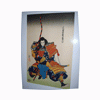
This Week's Edo Period Corner
edzo replied to Bugyotsuji's topic in General Nihonto Related Discussion
Dear Piers, I am learning at this time and my input is at best speculative. I am saying this because i'mm hugary to learn. First, quarter cut or sawn woob is usually reserved for the finest furniture and cabinetry. This because there is more waste of what may be an exotic and costly product. The log is quarted and then sawn at 45 degress again and the reason is to generate the beauty and durability of the finished outcome and result. The second comment i would like to make but purely from a speculative basis is; Wouldn't the side plates of the guns action have been decorated? The would have been the most visible. The second point i would make is i wondered if the stock of your gun might have been slightly larger. This because the fitting you posted in place assembled extends beyond the outer surface of the stock/butt, considering the quality of the outer finish of the piece and the exposed portion of the omote and ura i couldn't help but wonder if the stock or something else was recycled or modified. Never the less its a fine piece i wish was in my collection! Ed Edit. I would have expected a more finished omote, where exposed, or seppa given the effort of execution f the wood and inlay. -
Dear members, Can anyone give me any information about this drum. It came here (America), in 1842 I think its Buddhist or noh play related? Close examination around the skin does not reveal a seam in the wood, I think it may be a single piece of wood. I’m curious about the mon on the skin. I get the impression that it may have been suspended from a stand? Or carried in a procession? Any input will be appreciated, thanks
-
Dear Ian, This was another item with the suits. Quiver, the yanone are forged, the hold at the top of the quiver, the part that is hinged seems to be covered (iron), with a membrane and stiched. I'm thinking fish skin? all the other fittings are copper and the pouch is leather with drainage holes at the bottom. 18th century. Regarding the top of the quiver, that hinged arrow hold i just noticed that the attached metal section securing it to the quiver, it is made of copper and the "hinged arrow hold plate" is iron covered be skin.
-
Dear Ian Bottomley, This hanbo came with the two suits of armor. My research efforts, thus far are hopefully correct regarding this piece, ( I am a newbie.) I have come up with, Hanbo, Tsubame-bo or gata, mumei, two plate with asa nagashi no ana. Laced, three iron, hinged lames, lacquered (dark brown) in and out. I don’t recall seeing a hinged one before. Traces of gold gilding on the insde of the hanbo. I think this (gold gilding) may be a specific school characteristic. Anything you might be willing to correct or contribute would be appreciated, I hope you enjoy it. Thanks, Working on getting the suits out, just been to busy. Ogawa san did not see this.
-
Dear Mr. Trotter, The kanji stamp under the anchor stamp appears to me to be the same as the first character of the smiths signature below it. ed
-
Dear Chris, Please forgive my ignorance if u can. Could it be that the blade has been polished so much, based upon the depth of the hamachi, that the blade was re-tempered and deliberately retained Muramasa hamon characteristics for attribution? Sorry if this comment is out there.
-

This Week's Edo Period Corner
edzo replied to Bugyotsuji's topic in General Nihonto Related Discussion
Dear Piers, I have always appreciated the natural beauty of nature. I suspect that the stock, in this case, was quarter sawn to achieve this look and compliment the item as a whole. Very nice. Thanks foe your response, -

This Week's Edo Period Corner
edzo replied to Bugyotsuji's topic in General Nihonto Related Discussion
Dear Piers, Great looking example of a Japanese firearm. If i may inquire, do you know if the wood is native and if so, what species? Respectfully, -
dear David, Check this site for the design of your Sukashi Tsuba http://blogs.yahoo.co.jp/xcfmh521/58136814.html very close. Respectfully
-
Hi Jim P. Thought i'd share some photos of a shishi koshira on a tanto that i have. I find it well designed in that it is crouching and looking upward so as to be "attentive" when worn in the obi and viewed. Some areas have traces of gold however i have not yet determined if the gold was in patches or if the piece was covered. The eyes are solid gold inlay. Hope you enjoy this. The samenuri appears to have incorporated a gold dust lacquer. The clamps on eithr side appear to be shakudo. Thought u may be interested. respectfully,
-
Dear Jim P., I visited your very pleasant website. I wondered what magnification you used on the "close-up" magnification shots (on the website), and by what means? I would appreciate that info if you have an oppurtunity, Thank You,



